The Great Sand Sea is a region of rocky, rolling, ever-shifting dunes dotted with remnants of the past. Ancient ruins, the bones of empires and peoples who came before, are constantly buried and revealed by the shifting sands. Copses and small forests of petrified trees stand silent sentinel over the dunes, an ancient reminder of what the land once was. The massive crater near the center of the desert is a dark blemish on the land, emanating necromantic energy and venting black vapor high into the wild winds. The five oases that make life in the desert possible are beautiful havens in a dangerous land.
The Great Sand Sea is harsh, dangerous, and uncompromising, and the people who make their homes there are much the same. The organizations, cults, and clans that form in the Great Sand Sea are some of the most fearsome in the world's circle. Driven to innovate, grow, and struggle against dangers not found anywhere else, the people of the Great Sand Sea are as hearty, canny, and ruthless as any others in all of Ermendia.
Capital
Peloch
Government
Independent City States, each with a different governemnt(autocracy, mageocracy, merchantile republic, matriarchy, theocracy and such)
Religions
All the Gods of the Southern Desert
Imports
Beef, Grains, Textiles, Timber
Exports
Bloodsteel weapons, Blasting Powder, Glass, Mithral, Arnkrufuth Sandstone, Obsidian, Ink, Jewelry, Firewine, Alchemical Items
Major Geographical Features
Deep Stone Mountains
So far, the Deep Stone Mountains are the only place in the world where Arnkrufuth Sandstone can be found. This hardy tan stone veined with rich purple veins or ore is valued by both mages and builders worldwide and is the most lucrative and famous export of the Great Sand Sea. Arnkrufuth Sandstone is prized not only for its stunning looks but for its magical properties as well. Any spell or magic effect cast into this stone has its duration extended. The larger the piece of stone, the longer the magic will persist. For some of the largest blocks, spells cast into them can last years or decades. Many of the noble houses and grand buildings of Peloch, Fayer Stot, and Tsfun Barg are made from this fantastic material. The mountains are also rich in both Adamantine and Mithral, which are prized by the rapidly developing train industry. The Adamantine is used for the tracks, and the trains are made out of mithral as much as possible to reduce weight. Mining these important and valuable minerals is not without its risks. Above ground, the mountains are home to all sorts of monsters, from huge birds of prey to territorial elementals of all stripes to slumbering giants the size of mountains. Below ground, it isn't any easier with ancient undead, slumbering evils and plenty of more mundane predators that make the dark undermountain their home, simply waiting for the opportunity to feast on an unexpected miner.
The Deserted Heights
The mountains that make up the western edge of the Wild Winds Desert are not as rich in ore as the Deep Stone Mountains. This has led to them being comparatively undeveloped, with the only major settlement being Merb Vakh at the northern end. The lack of development has made the mountains a haven for outlaws, cults, and others trying to avoid the control of those in power throughout the Wild Winds Desert. While the occasional Grey Elf or Goliath village can be found on these high peaks, they are few and far between. These mountains are hostile, making for a hard western border between the desert and the rest of the continent.
The Moaning Mountain
The large volcano that feeds the forges of Fayer Shtot is blessedly docile, having not erupted in the last 1,000 years. It gets its name from the fact that on each new moon, a large bubble forms from deep within the mountain and eventually bursts from the top, letting out a long and forlorn moaning noise. This can last anywhere from several minutes to hours. Many believe there is some great creature bound within the mountain. All attempts over the centuries to divine or discover if this is true have failed, with many lives lost. This doesn't stop people from trying, however.
Lake Sahrandi
The large and beautiful lake is the largest water source in the Great Sand Sea and is partially responsible for Peloch's cultural and economic importance. The mist and steam always rising off the lake's surface is used by those that make the lakeshore their home for irrigation, making the land around the lake the most fertile outside of The Four Rivers. This constant evaporation leaves the lake covered in a constant layer of mist and fog. The fog makes for dangerous navigation for those who don't know the common safe travel lanes through it. To try and prevent unintentional collisions, most ships either employ a musician to sing and play instruments as they traverse the fog or hang chimes and bells from their sails that clang as they travel. The rift at the bottom of the lake that connects to the Elemental Plain of Water is linked to somewhere full of life, making the lake rich in fish and other less savory creatures of the deep. Many believe a great beast lives hidden in the lake's depths, but most dismiss sightings as simple fisherman tales. That doesn't stop rumors from spreading every time a vessel goes missing.
The Bottomless Crater
One of the great mysteries of the Great Sand Sea is what is at the bottom of the ancient crater below Hildakoen Hiria. It is widely believed and accepted that the cataclysm that created the desert also made the crater. Hildakoen Hiria sits atop the entrance to the lower depth and guards the easy entrances to the lower regions of the crater. Many foolish or brave explorers have sought to circumvent Hildakoen Hiria's control over who explorers the lower depths by delving into one of the many cracks that are found radiating out from the crater. These bold souls are almost never seen again alive, and those that are are nearly always mad or changed, never for the better.
Whatever happened to cause the crater has left it, and the surrounding region bathed in necromantic energy for miles. This energy sustains a thriving population of undead but is dangerous to any living beings who enter it. Visitors find themselves slowly wasting away, transforming into undead creatures the longer they stay in the region or the closer they get to the crater proper. The magic of the crater also binds those it makes to it, and any who have been transformed into an undead by its power are turned into mindless wandering monsters if they leave the area, doomed to wander the Great Sand Sea, preying on the living.
The Floating Table
The great plateau that rises out of the ancient dried river bed is a foreboding and mysterious place. It gets its name because, during the rains, only the top portion is visible, making the plateau appear to be a large floating saucer. What makes the Floating Table so feared is the extremely toxic mud and sand that surrounds it. Some strange mixture flows out of the plateau each rain and leaves behind a toxic slurry for hundreds of yards in every direction. There are endless rumors about the mysteries of the Floating Table, but few have made it there and returned.
The Five Oases
While all five oases that dot the Great Sand Sea are unique, they share one thing in common. They are the center of most humanoid life among the shifting sands. The easy access to water, the ability to grow food, and now the ability to fill the propulsion tanks of the new trains have made the Oases the center of both trade and culture in the Great Sand Sea. Each oasis is unique, and their particular quirks have shaped the communities and cities that have risen up on their shores.
Deep Dive Oasis
The smallest of the five oases and the deepest, this oasis contains more questions than answers. It is the only one of the five that no one has ever made it to the bottom and returned. Many believe that a jealous Marid makes its home at the bottom and captures all that delve into its layer. Not much animal life comes through, and until the trains started to crisscross the desert, the community around the oasis was relatively small but has grown of late to a fair-sized city.
The Spring of Tranquility
Its name makes this oasis sound like a quiet place of tranquility, and while some find that to be the case, others find the supernatural stillness of the water unsettling. No matter how large an object or how hard of an impact, the water is always perfectly smooth. Fish are abundant in this oasis, so much so that they now export fish to other cities along the rail lines.
The Rumbling Oasis
It is no mystery how this oasis got its name; anyone approaching within 5 miles of the oasis will hear its titular rumblings. The water is in constant motion, bubbling and occasionally geysering high into the air. This constant disruption makes sailing across the oasis dangerous at the best of times. Most people refuse without a druid or ranger who knows how to read and predict the motions of the water. This oasis is very rich in minerals and other nutrients, making for extremely rich soil around its shores. Some say the best wine in the world is grown on the shores of the Rumbling Oasis, and the Firewine produced here is truly unparalleled.
The Swirling Oasis
This oasis is in near-constant motion. The direction changes every three months following one of the great moons. No one has yet to determine why or how this happens. Some believe that it is a by-product of the relative position of the Prime Material and the Plane of Water; others believe it responds to the will of an ancient god or great beast long since forgotten. Whatever the reason, the only time the oasis is at rest is during the weeks of the Great Moon, and so much of life on its shores is centered around making the most out of these times of calm.
The Ebony Oasis
Compared to the other oases, this one is generally pretty tame. That is, until the ink bloom happens. At seemingly random intervals, though some claim to understand a pattern and be able to predict it, sudden great blooms of black ink will boil up and form on the surface of the oasis. Any time this happens, anyone with a boat scrambles to skim this ink off the surface and get it in sealed containers before it evaporates. This ink is highly prized by wizards, caligraphers, and priests for its rich quality and magical affinity. Wizards who use this ink find that spells only take half the time and pages to copy. A spell book written entirely in Ebony Ink is a rare and prized item.
Important Sites
Fayer Stot
The smallest of the three sister cities, Fayer Stot, may not have the grandeur of Tsfun Barg or the famed training halls of Merb Vahk, but it more than makes up for it with its many smiths, metal workers, and other craftsmen. It is commonly said that what Tsfun Barg dreams, Fayer Stot makes. This City, which lies on and in a mountain adjacent to The Moaning Mountain, uses the heat and lava from the great volcano to feed its ever-hungry forges. The city is not beautiful, but there is a charm in its functional austerity. Few nondwarves travel to the city, but traders and merchants flow from the city south to Peloch and west to Baham.
Ksilah, Rahbest, Manitrah
The three southern cities of the Great Sand Sea have always been close. Like siblings, they have fought each other plenty, but whenever an outside force threatens any of them, they band together. This closeness has only increased with the introduction of the railroad, allowing people and goods to travel much faster between them. This shared identity has led some in the cities to think of unifying into an independent group against the rest of the Wild Winds Desert. All three cities look similar, with large marketplaces, temples, and docks. Ksilah has the largest markets, while Manitrah produces the most food. Rahbest is best known for its weavers, and the city makes truly amazing tapestries and clothes.
Berrache and Baham
These two large villages are rapidly growing now that the railroad stops to pick up and deliver goods and replenish their water tanks. With this new, easier connection to the rest of the region, demand on the ink makers of Baham and Berrache craftspeople has increased significantly, allowing the villages to grow rapidly in the past few years. These growing pains have led to quite a bit of crime and volatility in these villages as people from all over the region and beyond seek their fortunes.
Hildakoen Hiria
The City of the Sleepless is not a pleasant place for the living. A city of dark stone and little light, Hildakoen Hiria is built into the outer walls of the Bottomless Crater with the Grand Temple of the Silent One at it's lowest point, set over the entrance to the lower depths of the crater. The city, like its inhabitants, has a haunted and forlorn feel to it, and those rare living visitors report a feeling of being unwelcome. Despite this, some risk the transformation that an unprotected person undergoes and the forlorn atmosphere to plumb the secrets of Hildakoen Hiria's great libraries. The city is famous for producing toxic or dangerous substances since the nature of its inhabitants makes them mostly immune to the perils of working with these dangerous materials. This makes Hildakoen Hirias outposts and outer caravanserai popular with monster hunters.
Dene
This small collection of semi-permanent tents and structures is one of the oldest settlements in the Wilds Winds Desert. Centered around the ruins of an ancient temple, whose god has long been forgotten, this wild caravanserai is a neutral meeting point for all the peoples who make the wild sands their home. Alliances, cease-fires, marriages, and any other business between peoples who are not friendly to each other is best conducted in Dene. It is one of the great taboos of the Great Sand Sea to spill blood here, and if a clan transgresses too often, they can find themselves banned. Every ten years, the town houses a celebration of life amongst the sands, which lasts a full season.
Ankh
Ankh is one of the two Orcish cities of the Wild Winds Desert. It is ruled by Sovereign Thungtrell, who is married to Queen Hashrahn of the great city of Morpork. The tradition of marrying the city's rulers to each other began centuries ago to solidify and unify orcish power. By all accounts, this current union is one of the happiest in decades. Ankh is a major cultural center for the orcish and other wild races in the region and a major trading hub. Many orcish, lizardfolk, and hobgoblin artisan make their home in Ankh and create amazing carving, scrimshaw, and weaving works.
The tanneries are the most famous feature of Ankh, particularly to non-orcs. A whole section of the city is devoted to the long and laborious process of curing, processing, and working monster hides of all kinds into usable material. This has led to a strong tradition of monster hunting, and many of the region's most famous monster hunters have come from Morpork.
Merb Vakh
Of the three sister cities, Merb Vahk is the one best known outside the Wild Winds Desert. The soldiers, adventurers, and other warriors who graduate from the various training halls of the city are renowned for their bravery and fighting prowess. They are prized as bodyguards, generals, and mercenaries. Whole companies of dwarven mercenaries can trace their origin to the city and call it home. The money and renown that these traveling warriors gain for the city only lead to its fearsome reputation. This has led some to claim they come from the city when they do not, trading on the city's prestige. Gods help any of these pretenders should they ever be caught by a true warrior of Merb Vakh.
Unlike the other sister cities, Merb Vakh is not built into a mountain but is instead spread across several high peaks of the Deserted Heights. Great stone bridges connect these peaks, creating one large city that spans several cities. Many new recruits and trainees find that they're expected to circumnavigate the great city each morning. The city has a severe beauty to it, and the sound of smiths and armorers' hammers can be heard, ringing out at all hours.
Tomb of the Ancient Queen
Ancient, Mysterious, and full of treasure and prestige for those bold enough to delve into its depths, the Tomb of the Ancient Queen is a seemingly endless ruin that extends for miles beneath the sand. The ancient sealed door to the underground ruin was first discovered 6 years ago. An inscription on the door read, "Below lies Queen Re'Hor'Norn-Rah. Beloved then feared, she and all she knew lay sealed below. Woe onto a world where she is awoken." Of course, the door was immediately opened. Since then, a small village of merchants, traders, taverns, and professional dungeoneers have made their living delving into or trading for the items that come from within the ruin.
To date, no one has definitively found Re'Hor'Norn-Rah. Many believe that she should be left to her final rest. A small cult that believes she is a sleeping god began a few years ago and has quickly grown. New rooms, passageways, and sections of the ruins are constantly being discovered. Many a clever scribe makes a living just by keeping up to date maps of the ruin.
Peloch
The City of Wonders is the cultural and spiritual heart of the region. It is a city steeped in history, magic, and violence where anyone can grasp everything they've ever wanted or lose everything they have.
Peloch has its own dedicated article.


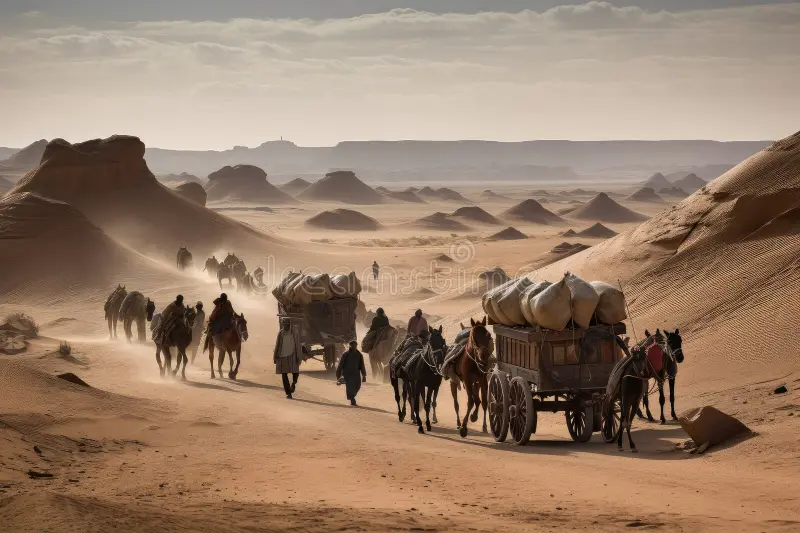
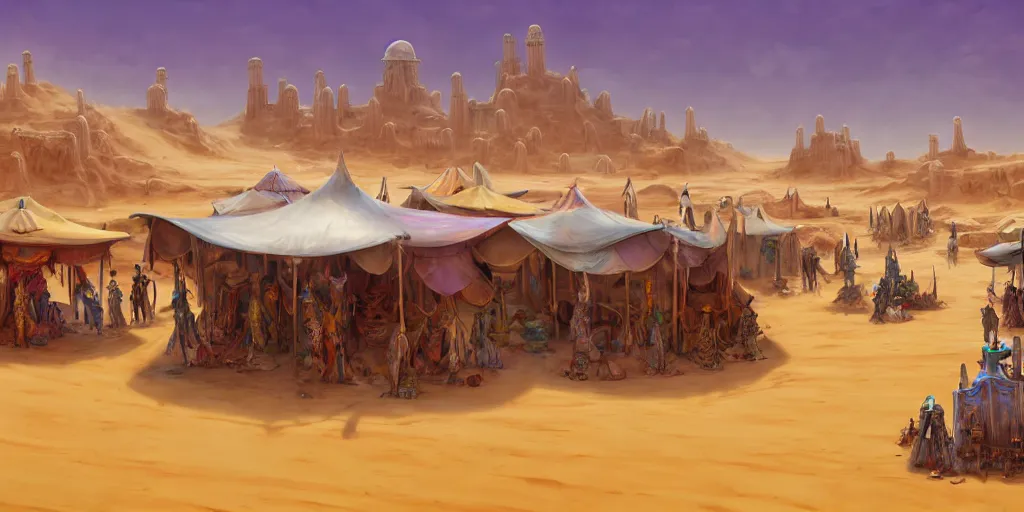
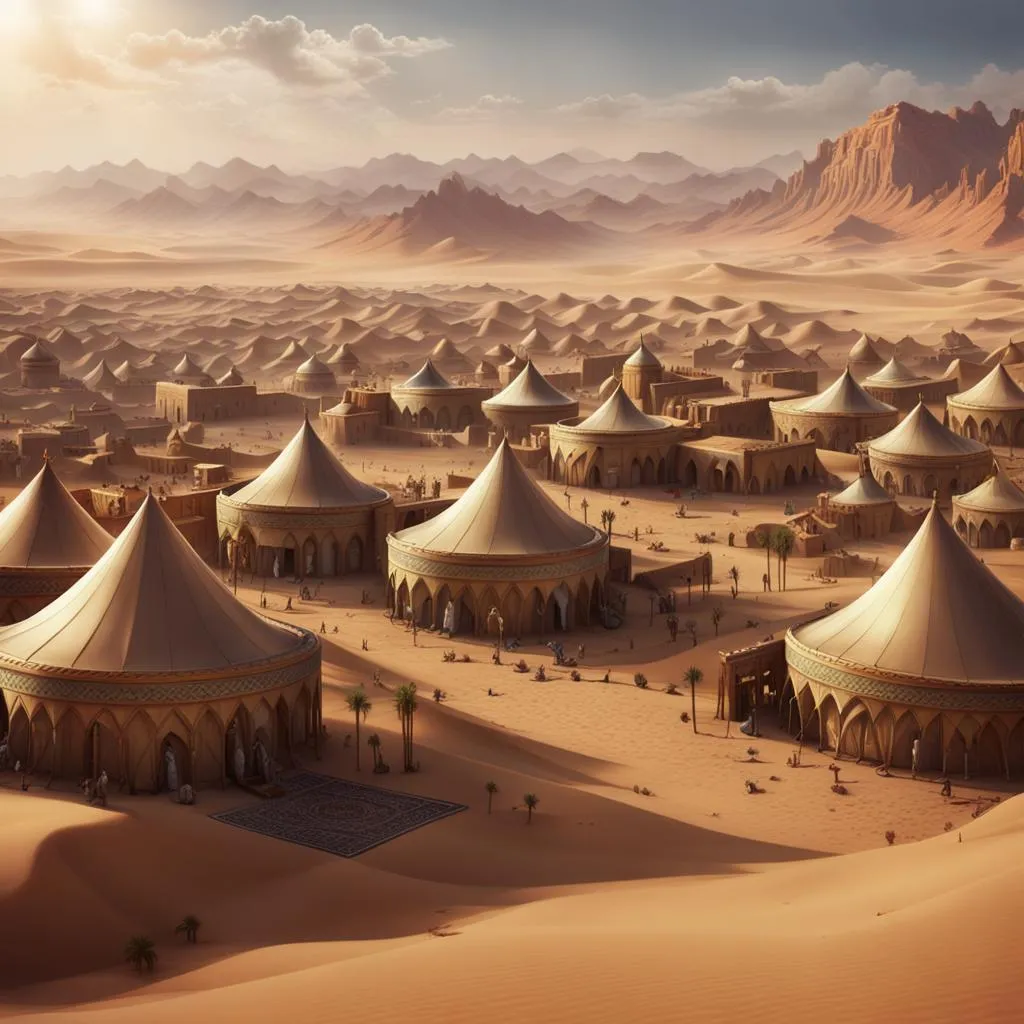
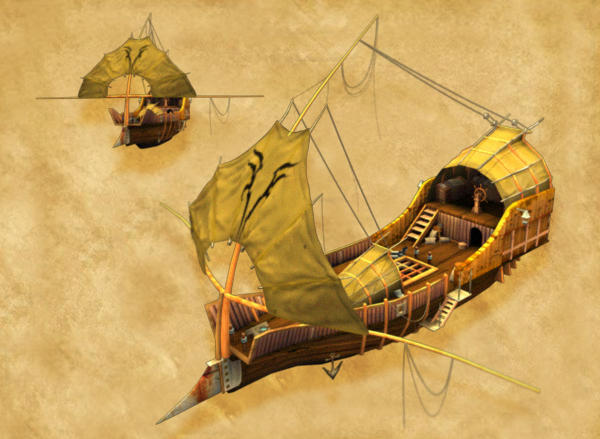
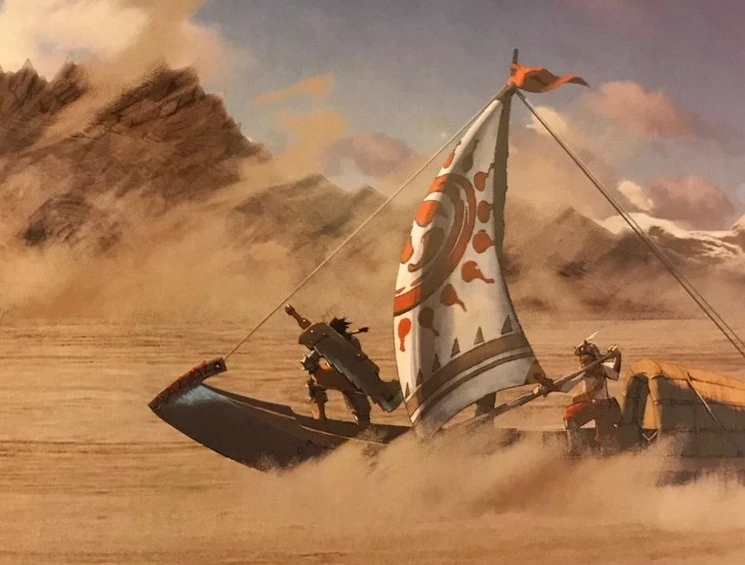
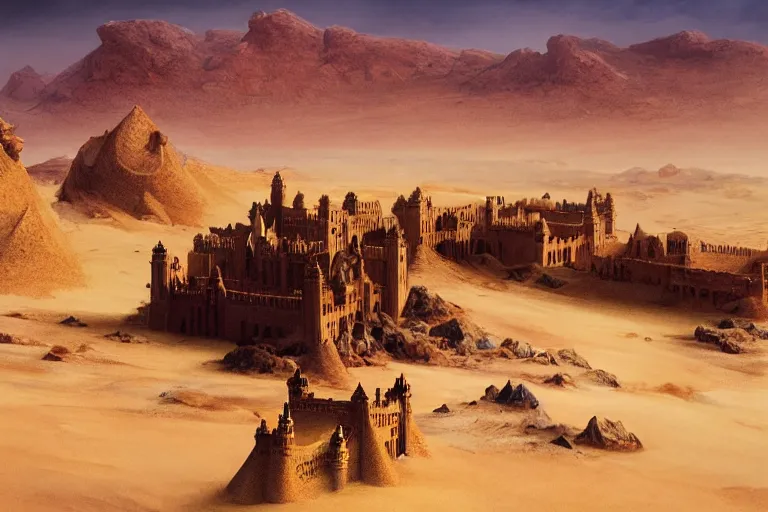
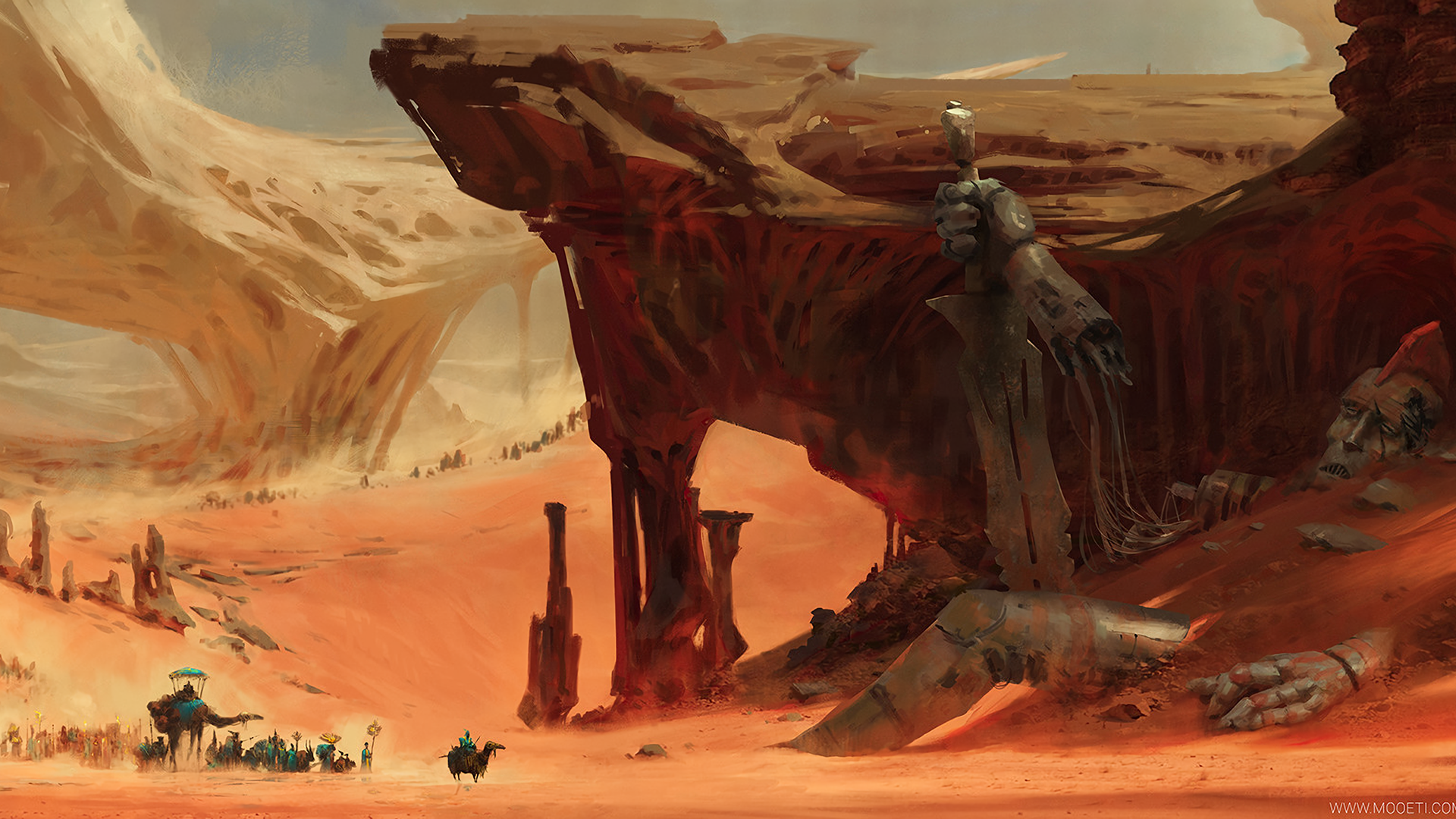
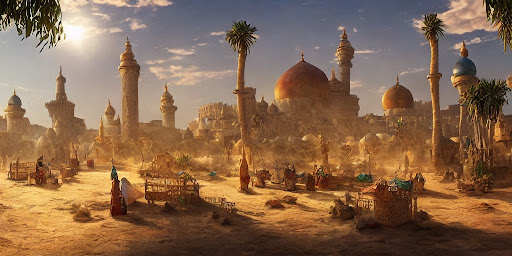

Comments